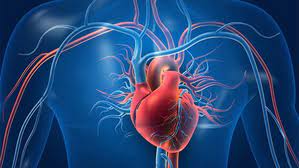Fainting, or syncope, is a temporary loss of consciousness caused by insufficient blood flow to the brain. While fainting can be a common and harmless occurrence, it may also signal an underlying health concern, particularly related to the heart. Dr. Elijah Behr, a cardiologist at Mayo Clinic Healthcare in London, outlines five important things to know about fainting.
1. Different Types of Syncope
The most common and generally benign type of fainting is vasovagal syncope, which occurs when a sudden drop in blood pressure leads to a brief loss of consciousness. Triggers for vasovagal syncope include emotional distress, pain, illness, or dehydration.
“In some people, their heart slows down instead of speeding up to compensate for a drop in blood pressure,” says Dr. Behr. “This leads to a lack of blood flow to the brain, causing them to faint.”
However, a more serious form of fainting is cardiac syncope, which occurs due to underlying heart conditions such as arrhythmias. This type of fainting is of greater concern, especially in older adults or individuals with a family history of heart disease, unexplained deaths, or fainting related to exercise.
2. Warning Signs Before Fainting
People experiencing an impending fainting episode may notice symptoms such as lightheadedness, nausea, ringing in the ears, tunnel vision, or excessive sweating. Some individuals may have these symptoms for up to 30 minutes before fainting, while others may only have seconds to react.
3. What to Do If Someone Faints
If someone faints, the first step is to check if they are breathing and have a pulse. If they do not, immediate emergency medical help should be sought, and CPR should be administered if needed. If the person is breathing, lay them flat and ensure their airway remains open.
For individuals feeling like they are about to faint, it is recommended to lower the head below the heart, such as placing the head between the knees or lying down with feet elevated. Staying hydrated and consuming electrolytes can also aid recovery.
4. When to Seek Medical Help
Although many fainting episodes are harmless, certain cases warrant medical attention. These include fainting that occurs suddenly without warning, recurrent fainting despite proper hydration, fainting accompanied by heart palpitations, or a blackout leading to injury. Older adults and those with a history of heart disease should take fainting episodes seriously and consult a doctor.
“If it’s the first time someone faints, it’s advisable to visit the emergency department or consult with a physician,” says Dr. Behr. “If it happens frequently under known circumstances, a primary care provider or cardiologist can help manage it.”
5. Overcoming Fainting Triggers
For individuals who faint at the sight of blood, cognitive behavioral therapy (CBT) may help train the brain to respond differently. Working with a mental health professional can aid in conditioning the mind to handle triggering situations more effectively.
Conclusion
While fainting is often not a cause for alarm, it is important to recognize when it may indicate a more serious condition. Understanding the different types of syncope, recognizing warning signs, and knowing when to seek medical help can prevent potential complications and ensure overall well-being.
Disclaimer: This article is for informational purposes only and should not be considered medical advice. Individuals experiencing frequent or unexplained fainting should consult a healthcare professional for proper evaluation and diagnosis.











